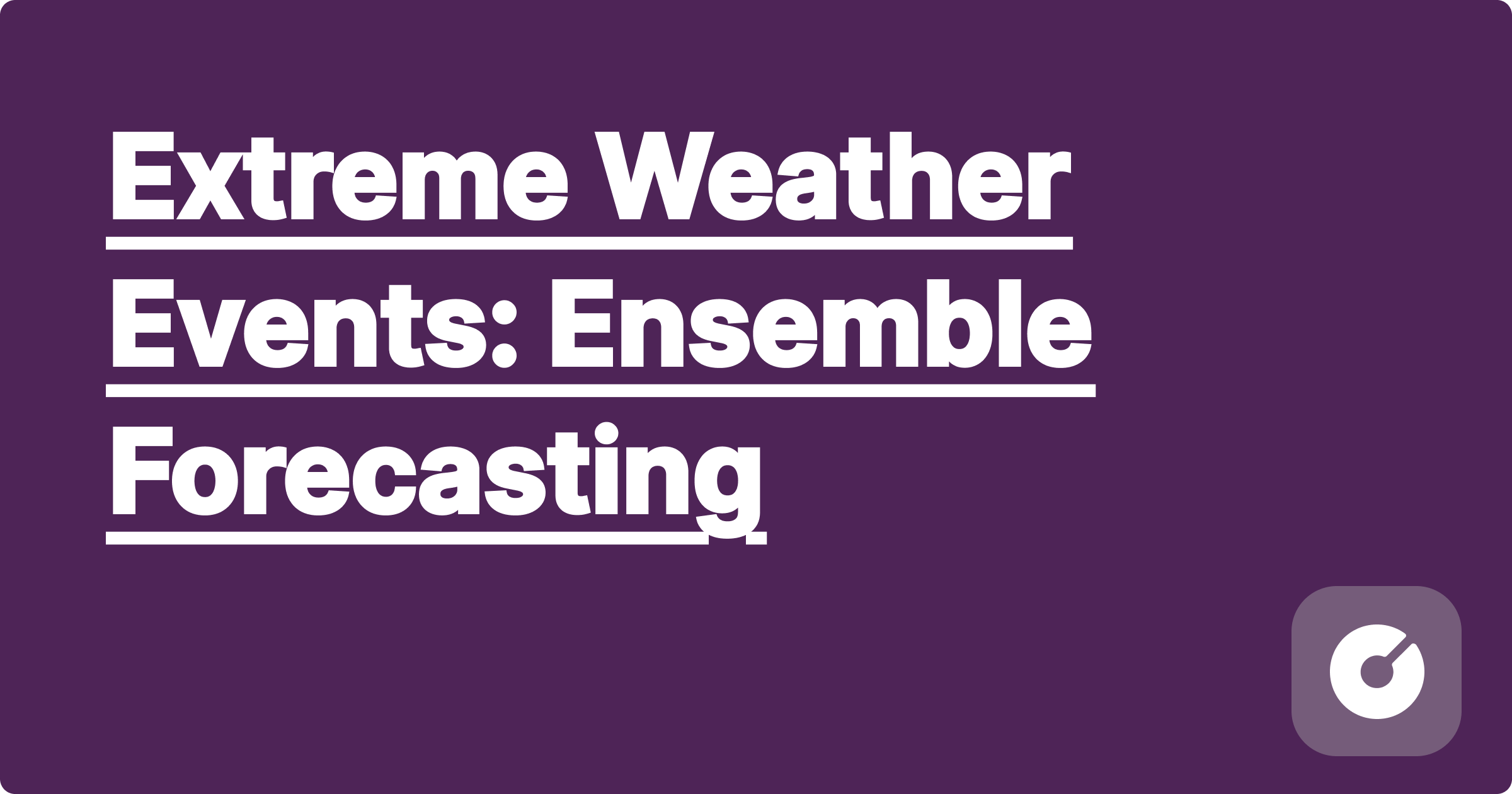
```html
Extreme Weather Events: Ensemble Forecasting
pre {
background-color: #f4f4f4;
padding: 10px;
border-radius: 5px;
overflow-x: auto;
}
.equation {
background-color: #f9f9f9;
padding: 10px;
border: 1px solid #ddd;
border-radius: 5px;
margin: 10px 0;
}
.tip {
background-color: #e6ffe6;
border: 1px solid #99ff99;
padding: 10px;
margin: 10px 0;
border-radius: 5px;
}
.warning {
background-color: #fff2e6;
border: 1px solid #ffe0b2;
padding: 10px;
margin: 10px 0;
border-radius: 5px;
}
hljs.initHighlightingOnLoad();
Upon completion of this module, you will be able to
Traditional weather forecasting often relies on single deterministic models. However, the inherent chaotic nature of the atmosphere and uncertainties in initial conditions limit the accuracy of these predictions, especially for extreme weather events. Ensemble forecasting, which combines predictions from multiple models or model runs with slightly perturbed initial conditions, offers a significant improvement by providing a probabilistic forecast. This allows us to quantify uncertainty and improve the reliability of predictions.
This section delves into cutting-edge techniques in ensemble forecasting, drawing from recent publications (2024-2025). Unfortunately, specific citations to unpublished 2024-2025 preprints are impossible without access to a constantly updated database of research. However, the general concepts outlined below remain relevant and applicable to the latest advancements.
BMA provides a rigorous framework for combining forecasts from different models, weighting them based on their past performance and uncertainty. The weights are updated dynamically as new data becomes available.
\(P(Y|X) = \sum_{i=1}^M w_i P(Y|X, M_i)\)
where \(P(Y|X)\) is the posterior predictive probability, \(M_i\) represents the i-th model, and \(w_i\) is its weight. Determining optimal weights is crucial; techniques like Markov Chain Monte Carlo (MCMC) are frequently employed.
Recent research has shown the potential of deep learning for ensemble forecasting. One approach involves training multiple deep neural networks with different architectures or initializations. Another involves using a single deep network with ensemble techniques embedded within its layers (e.g., dropout, batch normalization).
Experiment with different architectures like CNNs, LSTMs, and Transformers, as well as ensemble methods like bagging and boosting, to find the optimal combination for your specific application.
A burgeoning area involves integrating models from different physics domains (e.g., atmospheric, oceanic, hydrological). This allows for a more holistic understanding of complex weather systems and improved predictive capabilities, especially for events influenced by multiple factors. A key challenge lies in effective data fusion and model calibration.
Let's illustrate ensemble forecasting with a simplified example using Python and the scikit-learn library:
```python
import numpy as np
from sklearn.ensemble import BaggingRegressor
from sklearn.tree import DecisionTreeRegressor
from sklearn.metrics import mean_squared_error
# Sample data (replace with your actual data)
X = np.random.rand(100, 5) # Predictors
y = 2*X[:,0] + 3*X[:,1] + np.random.randn(100) # Rainfall
# Create and train the bagging regressor
model = BaggingRegressor(DecisionTreeRegressor(), n_estimators=10, random_state=42)
model.fit(X, y)
# Make predictions
y_pred = model.predict(X)
# Evaluate performance
mse = mean_squared_error(y, y_pred)
print(f"Mean Squared Error: {mse}")
```
The simple example above serves as an introduction. More sophisticated approaches involve:
* **Calibration:** Adjusting model outputs to match observed probabilities. Platt scaling and isotonic regression are common techniques.
* **Verification:** Using metrics like the Brier score, reliability diagrams, and ROC curves to assess forecast accuracy and reliability.
* **Computational Cost:** Ensemble methods can be computationally expensive. Strategies like parallelization and efficient algorithms are crucial for scalability.
Several companies are actively using ensemble forecasting in their operations. For example, Munich Re, a global reinsurance company, uses advanced ensemble models to assess risk and price catastrophe insurance. Similarly, energy companies such as Vattenfall utilize ensemble forecasts to optimize energy grid management and improve renewable energy integration, accounting for weather variability.
Despite the advancements, challenges remain:
* **Data Scarcity:** Obtaining high-quality, geographically diverse data for training and validation is often challenging, especially for extreme events.
* **Model Bias:** Models can inherit biases from the data they are trained on, potentially leading to inaccurate or unfair predictions.
* **Explainability:** Understanding why an ensemble model makes a particular prediction is crucial for trust and informed decision-making. Explainable AI (XAI) techniques are becoming increasingly important.
The accuracy and timeliness of extreme weather event predictions have significant ethical and societal implications. Accurate forecasts enable effective disaster preparedness and mitigation, saving lives and reducing economic losses. However, the potential for misuse of forecasts, for example, in speculative financial markets or discriminatory resource allocation, needs careful consideration.
Ensemble forecasting has emerged as a powerful tool for improving the accuracy and reliability of predictions for extreme weather events. By combining the strengths of multiple models and accounting for uncertainty, these techniques offer valuable insights for decision-making across various sectors. Continued research into advanced algorithms, data integration, and model explainability is crucial to unlock the full potential of ensemble forecasting and address its associated challenges.
* **Advanced Statistical Modeling:** Explore Bayesian hierarchical models and other advanced techniques for probabilistic forecasting.
* **Data Assimilation:** Investigate how to incorporate real-time observations into forecast models to improve accuracy.
* **High-Performance Computing:** Learn about parallelization and distributed computing techniques for efficient ensemble forecasting.
```
Anesthesiology Career Path - Behind the OR Mask: A Comprehensive Guide for Pre-Med Students
Internal Medicine: The Foundation Specialty for a Rewarding Medical Career
Family Medicine: Your Path to Becoming a Primary Care Physician
Psychiatry as a Medical Specialty: A Growing Field Guide for Aspiring Physicians
Extreme Weather Events: Ensemble Forecasting
AI-Enhanced Weather Forecasting: Advanced Prediction Models
Air Quality Forecasting with Ensemble Methods
AI-Enhanced Econometrics: Time Series Analysis and Economic Forecasting
Space Weather Prediction with Deep Learning
AI-Powered Time Series Forecasting: Advanced Prediction Techniques